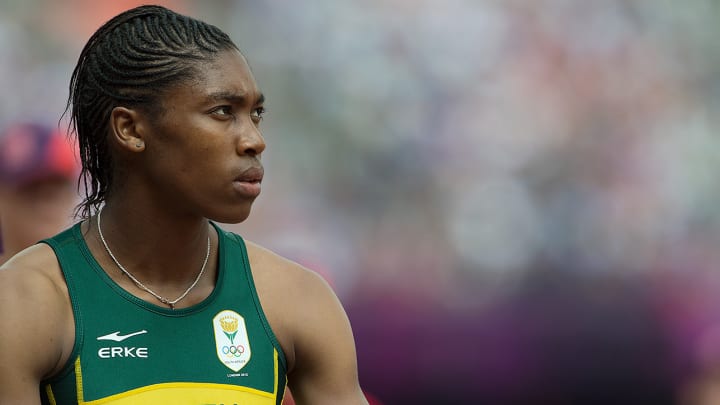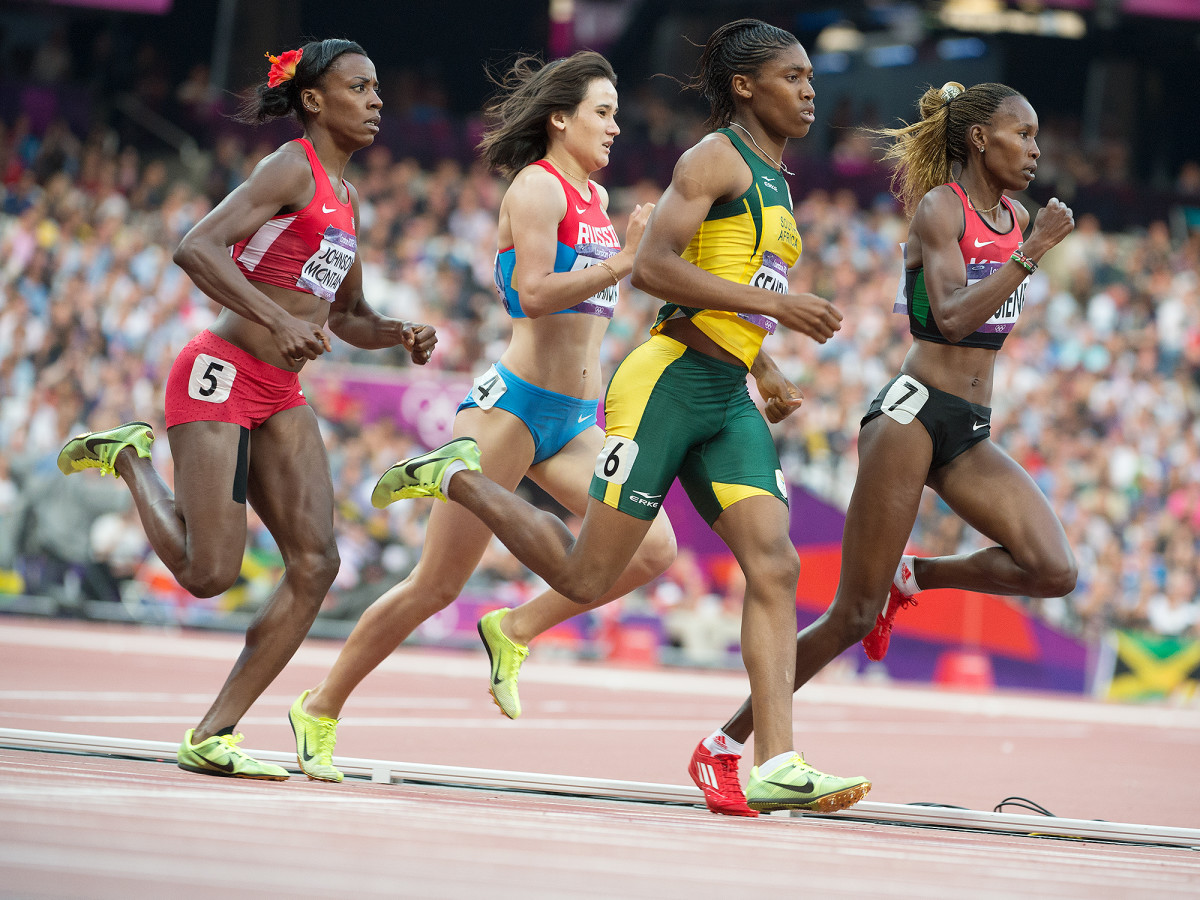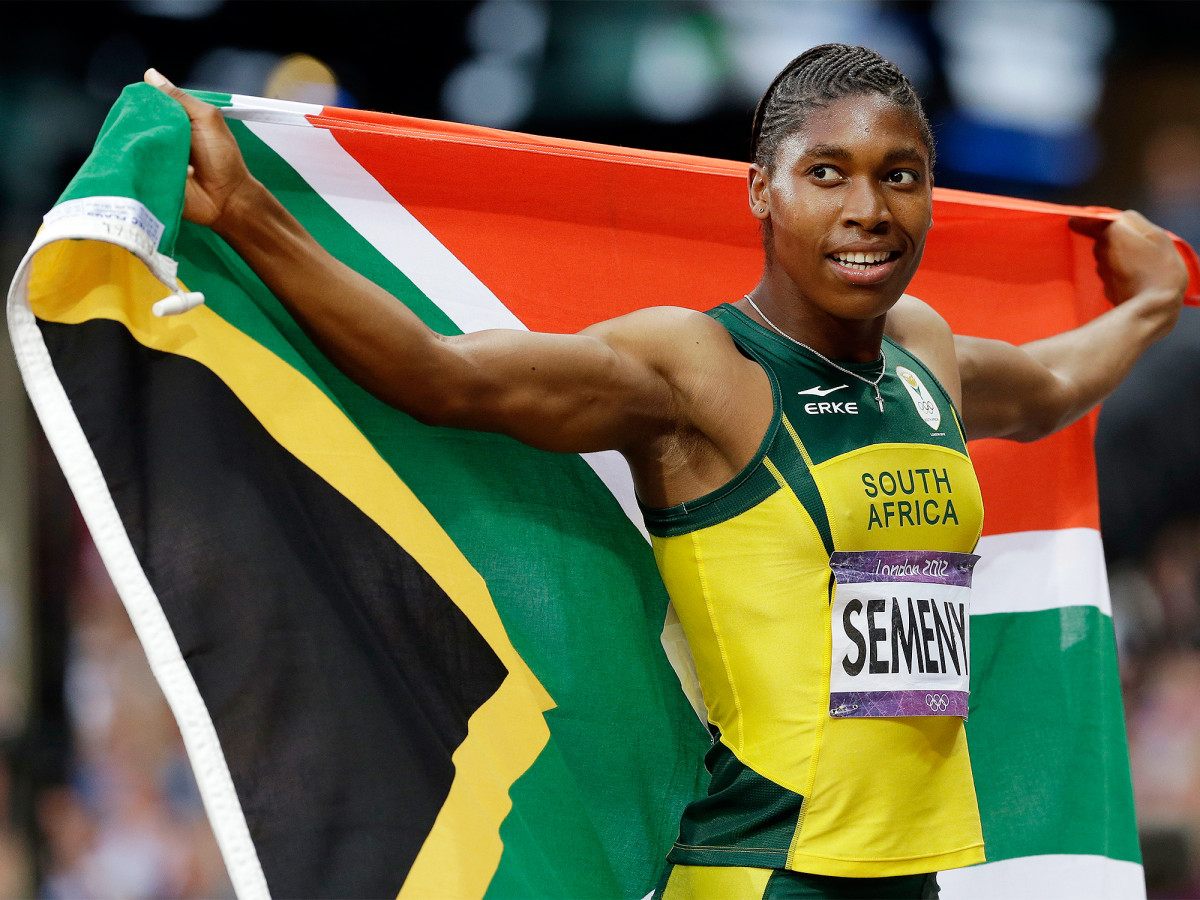Is it fair for Caster Semenya to compete against women at the Rio Olympics?

This story appears in the Aug. 15, 2016, issue of Sports Illustrated. Subscribe now for more in-depth coverage.
It is likely that on the night of Saturday, Aug. 20, in the Olympic Stadium in Rio de Janeiro, a 25-year-old South African woman named Caster Semenya will win a gold medal. Her victory will come in the 800 meters, a race in which her times have been approaching a decades-old world record thought by many in the sport to be unapproachable. Her performance will be stunning: She is 5'10" and weighs 161 pounds, with muscular arms, broad shoulders and narrow hips. She has a severe jawline, hard and strong, and a competitor's unflinching eyes. In a 2009 article, Ariel Levy of The New Yorkerdescribed Semenya as "breathtakingly butch."
This is not Semenya's first appearance on the global stage; she has been a world-class runner for eight years and won a silver medal in the 800 in London. But now she is dominant, and the alleged—but unverified—source of that dominance has made her one of the most significant and potentially transformative athletes in Olympic history. Her races in Rio will trigger an emotional debate on gender and sports, one that is far more challenging than the comparatively simple issue of doping.
"She looks the way she looks, and then she runs away from the field," says Joanna Harper, a medical physicist in Portland and the first transgender woman to consult with the International Olympic Committee on gender and sports. "And then, yeah, all hell breaks loose."
Deep U.S., controversial favorites highlight women’s track and field in Rio
The crux of the Semenya controversy is the belief of many athletes, medical experts and sports journalists that Semenya has an intersex condition, in which a person has anatomical sex characteristics of both males and females. That causes her to be hyperandrogenous—her body produces much higher levels of testosterone than most other females. And that in turn builds greater muscle mass and allows her to run faster. Semenya, whose supposed advantages have been debated in the track underground since she won the 800 meters at the world championships as an 18-year-old in 2009, has never publicly confirmed any of this, and declined to comment to Sports Illustrated this week. In 2009 she told the South African magazine You: "I see it all as a joke, it doesn't upset me. God made me the way I am and I accept myself. I am who I am and I'm proud of myself."
The assumptions of journalists and competitors about Semenya stem from connecting a series of dots, from her precocious dominance to media reports about her medical records to peaks and valleys in her race times that have coincided with changes in track gender rules. Last year the Court of Arbitration for Sport (CAS) suspended a rule by the IAAF, track's governing body, that placed a ceiling on testosterone levels in female athletes. Since then Semenya has been nearly unbeatable, prompting speculation that she had been suppressing her testosterone with medication but is no longer doing so. Semenya hasn't discussed this publicly either, but in an article posted online by The Guardian on July 29, her coach, Jean Verster, said, "Caster does what she needs to do."
In Monaco last month, at the last major international competition before the Olympics, Semenya pulled away from a strong field over the final 100 meters of the 800. Only 11 women in history have run faster than her winning time of 1:55.33, and only two have done it since 1997. The ease of Semenya's victories this year and the continuous improvement in her times have prompted speculation that she will threaten the world record of 1:53.28, set 33 years ago by Jarmila Kratochvílová of what was then Czechoslovakia. Although Kratochvílová never tested positive for any PED, many track and field insiders suspect that her record was artificially aided, given the drug-addled era in which it was set. If Semenya were to approach Kratochvílová's mark in Rio, she would turn the sport on its head.
"I hope she blows away the competition," wrote U.S. 800-meter runner Phoebe Wright, who is not a member of the U.S. Olympic team but has run against Semenya, in an email to SI. "One, I want to see how fast she can run. But also, I want the world to see how much of an advantage she has."

The Semenya story dovetails with evolving definitions of sex and gender outside of sports. According to Harper, 60 million people are either transgender or intersex and "don't fit easily into our notion of male and female." They have made slow, hard-earned progress in society, largely through grudging acceptance of self-defined gender identity (Caitlyn Jenner's, for instance). But that battle is far more complex in sports, where women's victories depend on clear boundaries between male and female. When those boundaries are blurred, intersex (and, potentially, transgender) athletes classified as female might dominate.
"We separate men and women into categories because we want women to be able to win some competitions," says Eric Vilain, a professor of human genetics at UCLA and a consultant to the IOC medical commission. "There is 10 to 12% difference between male and female athletic performance. We need to categorize with criteria that are relevant to performance. It is a very difficult situation with no easy solution."
The Semenya story went global in 2009, at the world championships in Berlin. Then 18, she dominated an 800-meter field of more experienced women by running 1:55.45, a South African national record. She spoke to journalists in a deep voice and even then had a muscular build. Twenty-three days later, Mike Hurst of The Daily Telegraph of Sydney wrote that the IAAF had subjected Semenya to testing and that she was found to have three times the amount of testosterone that a woman would be expected to have. The IAAF quickly issued a press release confirming only that the "gender verification test results will be examined by a group of medical experts." The IAAF did not say anything more about Semenya until July 2010, when it issued a 56-word statement clearing her for competition and stating that "the medical details of the case remain confidential and the IAAF will make no further comment on the matter."
Neither Semenya, her coaches nor South African athletic officials have confirmed any of the details reported by The Daily Telegraph. Her mother told the BBC in 2009, "Caster is a girl. Her birth certificate says she is a girl." The president of South Africa's athletics federation, Leonard Chuene, resigned over the case, saying, "We are talking about a child here, whose name has been dragged through the dirt by [the IAAF]. If gender tests have to take place, they should have been done quietly. By going public on the tests, the IAAF has let down this young child."
Semenya was raised in a rural village in Limpopo, South Africa's northernmost province. Harper says that intersex conditions are more likely to go unrecognized in people from underdeveloped and rural areas.
Gender determination was first introduced in Olympic track and field in 1948. It consisted of a simple declaration by participating nations that their female athletes were indeed female. (Stella Walsh, who was born in Poland but raised in the U.S., and who won the 100 meters at the '32 Olympics while competing for Poland, had a very masculine appearance. After Walsh's death in '80, an autopsy showed that she was intersex.) In '68 the IOC instituted chromosome-based gender testing, done by a cheek swab. If a woman did not have two X chromosomes, she was declared ineligible. A chromosome test was discontinued in '99 after criticism that it was too invasive and based on faulty science. After that there was no universal genetic testing, although athletes could be examined if a test was requested, often by competing nations or their representatives but sometimes by governing bodies.
This is how Semenya came to be tested in the summer of 2009, although the identity of the party requesting the test has never been revealed. (There was considerable outrage after Semenya's race in Berlin. Fifth-place finisher Mariya Savinova of Russia memorably said, "Just look at her.") Semenya returned to competition in 2010 but did not run faster than 1:58.16, more than 2.5 seconds off her time at the worlds.
In April 2011 the IAAF introduced what it called "eligibility rules for females with hyperandrogenism." These stated, in part, "A female with hyperandrogenism who is recognised as a female in law shall be eligible to compete in women's competition in athletics provided that she has androgen levels below the male range." The testosterone ceiling was not stated but has been widely reported to be 10 nanomoles per liter. According to Harper and Vilain, the normal range for females is .5 nmol/L to 3 nmol/L. For men, the range is approximately 10 to 30. "The rule allowed for testosterone to be considerably above the normal female range," says Vilain, "so I have always looked at the guidelines as very inclusive."
A long run back: How English Gardner overcame depression, anxiety on road to Rio
Under the rules, hyperandrogenous females would have to lower their testosterone levels. The only ways to do this are by taking suppression medication or by surgically removing testes, if they are present. Semenya's career stagnated. In 2011 she finished second at the worlds in 1:56.35—a very fast time but slower than her Berlin finish. In 2012 she won the silver medal at the London Olympics in 1:57.23; the gold medalist was Savinova, who has since been implicated in the Russian doping scandal and may lose the medal. Semenya slowed to a best of 1:58.92 in 2013, and the next year she finished 12th at the storied Bislett Games in Oslo in a dismal 2:03.68. Last summer she failed even to advance to the final of the 800 meters at the worlds in Beijing. It was widely assumed that she was taking hormone suppressants, but she did not confirm it. In The Guardian, Verster said Semenya had frequently been injured in the last two years, but he did not deny that she was on hormone suppressants. "People ask me why Caster didn't run well last year," said Verster. "We were building nicely but in April she injured her knee and couldn't train much in May and June. In July we said, Let's go to Europe and run two races. She surprised herself by qualifying for the world championships in Beijing. She ran 1:59 in the heats but on semifinal day she felt awful because she hadn't done back-to-back sessions for a long time."
That same month the CAS ruled in favor of sprinter Dutee Chand of India, who had been barred from competition in 2014 due to testosterone levels above the established level. The Chand ruling provisionally cleared the way for intersex athletes to compete without testosterone parameters; the IAAF has two years to show why the limit should be restored. Meanwhile Semenya, running during a period of no rules limitations, is unbeaten this year in nine 800-meter finals, and at a meet in South Africa in the spring she won the 400, 800 and 1,500 meters in times that would be competitive in high-level races. If Semenya was, indeed, suddenly freed from drugs to suppress her testosterone, the effect on her sport was even more dramatic than on her times.
"I don't like the idea of anyone being excluded," says Wright, the U.S. runner, "but we have to keep our sport fair, which means deciding where the genetic and performance advantage is too much. It sucks to ask a person to alter herself in order to compete. It's not Caster's fault she was born the way she is; some may even consider it a talent. But would you watch the Super Bowl if you knew who was going to win?"

Harper, who testified in the Chand hearing, believes that a ceiling is necessary. "Who are you trying to be fair to?" she says. "Are you trying to be fair to billions of potential female athletes? Or are you trying to be fair to a very small minority of people who live a truly marginalized existence? It's difficult. In my opinion, the least unfair solution is that if you want to be a female athlete, the key is testosterone. If your testosterone is below certain levels, we're going to let you compete. As a female."
Vilain, the UCLA geneticist, sees what he calls a "schizophrenic" conflict between the Chand ruling and the IOC guidelines on transgender female—not intersex—athletes, which was rewritten in November to allow an athlete to participate in competition as a female if her testosterone is below 10 nanomoles per liter, same as the old IAAF standard. "The guidelines are very favorable for transgender athletes, and a great advancement," says Vilain. "But the same rule was struck down for intersex athletes. It's illogical."
In the present, the Chand ruling can be seen as a victory for human rights. In the future, it could become a defeat for women's sports. Vilain does not expect that the IAAF will succeed in restoring the testosterone ceiling: "CAS wants IAAF to demonstrate the entirety of the difference between male and female athletic performance is androgenous testosterone. That is not going to be proven, because it's not true. There are other factors. My testosterone level is higher than Jackie Joyner-Kersee's, but she would defeat me in a race for many other reasons."
Michael Phelps, Usain Bolt intertwined as pillars of modern Olympic greatness
Where, then, does this lead? Perhaps Olympic sports should establish a third gender category: intersex. A more likely possibility, given societal trends: "You put everybody in the same bag, just compete by gender identity," says Vilain. "Right now the social activists are winning. So you can have Bruce Jenner saying, 'I'm Caitlyn, and I'm competing as a woman.' Nations have a huge investment in sports, and they would do this. And that would be a disaster for women's sports. It would be a sad end to what feminists have wanted for so long."
So it is that Caster Semenya runs in Rio, racing for a gold medal, a young woman from rural South Africa chasing a record that has stood for decades. It should be the simplest of challenges, yet it is not simple at all. Instead it asks that you decide, in the most fundamental way, who we are as humans. And who we will be.
